Structural form of steel structure factory design
The structural form of the factory building is the core language of industrial buildings. Its design not only determines the practicality of the space, but also deeply reflects the integration of regional climate, industrial needs and construction technology. From the simplicity of the single slope roof to the stability of the double span frame, from the transparency of the single span large space to the layered use of high and low spans, each structural form is a precise response to the triangular relationship between function, environment and cost. The following is an analysis of the factory building structure and application scenarios from three dimensions: roof slope (single slope/double slope), horizontal span (single span/double span), and longitudinal height (high and low span), combined with global typical cases.
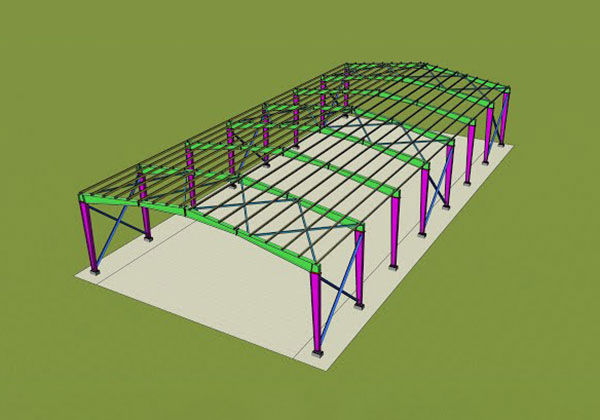
Ⅰ. Roof slope: single slope vs double slope
The roof slope is the most intuitive structural feature of the factory building, which directly affects the drainage efficiency, space height and construction cost. In global practice, the choice of single slope and double slope is mainly driven by three factors: rainfall, roofing materials, and internal functions.
1.1 Single-slope roof
Structural definition: The roof is tilted on only one side, and the other side is a vertical gable (or parapet), with a slope of usually 15°-30° (commonly around 20°).

Core advantages:
- High space utilization: No double-sided eaves to block, and the horizontally available wall is wider (such as large equipment or skylights can be directly installed on the gable side).
- Low construction cost: Only single-side purlins and drainage grooves are required, and the amount of steel used is reduced by about 15%-20% compared with double slopes.
- Simple shape: A typical feature of modern industrial style, suitable for parks with requirements for architectural aesthetics (such as technology factories).
Applicable scenarios:
- Arid and rainless areas: For example, petrochemical plants in the Middle East (Saudi Arabia and the United Arab Emirates), with annual rainfall of less than 100mm, single-slope roofs are sufficient to cope with occasional rainfall, while reducing the amount of roofing materials (such as color steel plates). Large-space storage needs: Grain storage warehouses in Texas, USA (such as ADM grain warehouses), with single-slope roofs and high purlins (span of 36 meters), can be equipped with large loading and unloading ports (width of 8-10 meters) on the gable side to improve logistics efficiency.
- Modular plant expansion: Electronic assembly plants in Southeast Asia (Vietnam, Indonesia) often use single-slope roof modular design to quickly expand the plant area by stacking single-slope units (single module span of 12 meters, only gable connection nodes need to be added when expanding).
- Limitations: Low drainage efficiency (only one-side drainage), easy to accumulate water in rainstorm areas. The gable side needs additional structural reinforcement (such as adding diagonal braces), otherwise strong winds may cause the gable to deform (such as in the Philippines where typhoons are frequent, the gable of the single-slope plant needs to be reinforced with C-shaped steel diagonal braces).
1.2 Double-slope roof
Structural definition: The two sides of the roof are symmetrically tilted to form a herringbone slope, with a slope of usually 20°-45° (25°-30° is common in industrial plants).

Core advantages:
- Efficient drainage: The double-sided drainage grooves can quickly guide rainwater to the ground on both sides. The drainage capacity in rainstorm areas (such as northeastern India and southern China) is increased by more than 50% compared with a single slope.
- Strong spatial stability: The purlins on both sides are symmetrically distributed, and the roof load is transmitted through the main steel columns on both sides, which has better overall wind and earthquake resistance (especially in medium and high Intensity earthquake zone).
- Flexible function expansion: The slope roof can integrate light strips (such as transparent PVC panels or photovoltaic glass) and ventilators (arranged along the slope), taking into account both natural lighting and heat dissipation needs.
Applicable scenarios:
- Rainy/snowy areas: Automobile manufacturing plants in Europe (Germany, Poland), with annual rainfall exceeding 800mm, double-slope roofs with deep eaves (extended length 0.8-1.2 meters) effectively prevent rainwater from flowing back. When snow accumulates in winter, a slope of ≥30° can avoid snow accumulation (such as the double-slope roof slope of BMW Leipzig plant is 30°, Snow load design value 1.5kN/m²).
- High-demand industrial scenarios: Precision machinery factories in Japan (Toyota, Honda), with thermal insulation cotton (thickness 100mm) set on the inside of the double-slope roof, combined with double-layer color steel plates (50mm intervals) to form an air insulation layer, the room temperature is stable at 20℃±2℃ in winter.
- Green building certification requirements: Certified factories in North America (LEED in the United States, BOMA in Canada), double-slope roofs can integrate solar photovoltaic panels (laid along the slope, with the inclination matching the local latitude), such as the double-slope roof of Tesla’s California factory The rooftop photovoltaic coverage rate is 60%, and the annual power generation meets 15% of the power demand in the factory.
- Limitations: It needs to be supported by main steel columns on both sides, and the horizontal span is limited (the conventional maximum span is 36 meters, and the super span requires additional intermediate columns). The amount of steel used is about 15% higher than that of a single slope, and the initial construction cost is slightly higher.
Ⅱ. Horizontal span: single span vs double span
The horizontal span refers to the horizontal distance between the gables on both sides of the factory building, which directly affects the internal equipment layout, logistics efficiency and structural form. The choice between single span and double span is essentially a trade-off between large space flexibility and multi-column support stability.
2.1 Single-span factory building
Structural definition: Only the main steel columns are set on the gables on both sides, and there are no other supporting columns in the middle. The span is usually 12-48 meters (24-36 meters is common in industrial plants).
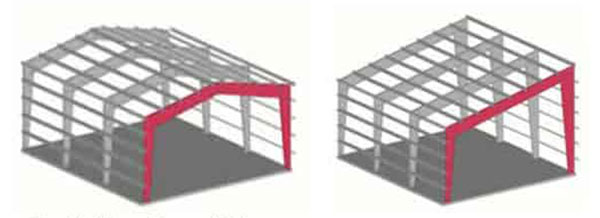
Core advantages:
- Transparent internal space: No intermediate columns are blocked, large equipment (such as machine tools, production lines) can be arranged freely, and the width of the logistics channel is unlimited (such as the automobile assembly workshop requires a 10-meter wide channel).
- High construction efficiency: Only the column grid on both sides is required for positioning, and the steel beam is a single-span simply supported beam (or continuous beam), and the installation period is shortened by 20%-30% compared with the double span.
- Cost advantage: The amount of steel used is concentrated on the columns and main beams on both sides, which is about 10% less than the double span (because there are no intermediate columns and secondary beams).
Applicable scenarios:
- Heavy industry and equipment manufacturing: The steel smelting workshop in the Ruhr area of Germany (such as ThyssenKrupp) uses a 48-meter single-span plant, combined with heavy truss beams (self-weight 80 kN/m), supporting the 200-ton overhead crane track.
- Logistics and warehousing: Amazon’s super warehouses in the United States (such as the FC sanitary products warehouse in Kentucky) adopt a 36-meter single-span design, combined with high-rise shelves (15 meters in height), to achieve full-scene coverage of goods-to-person sorting robots.
- Temporary emergency facilities: Fangcang hospitals built around the world during the epidemic (such as Huoshenshan in Wuhan, China, and temporary hospitals in New York, USA) have single-span structures (span of 24 meters) combined with modular steel columns, and can be completed within 48 hours.
- Limitations: When the column spacing is too large, it is difficult to control the deflection of the main steel beam (the standard limit is L/250, L is the span), and the beam height needs to be increased (such as the height of a 36-meter span steel beam is 2.5 meters). The seismic performance is weak (the long natural vibration period of the large-span structure and the large seismic energy input), and high-intensity areas (such as Japan and Chile) need additional reinforcement (such as setting support trusses).
2.2 Double-span factory building
Structural definition: The factory building is divided into two or more spans horizontally (commonly 2 spans, span 12-24 meters/span), with columns in the middle for support, and a total span of 24-48 meters (such as 2×24 meters = 48 meters).

Core advantages:
- Clear functional divisions: The middle column can be used as a natural partition to divide the production area (such as welding, stamping) and the storage area (such as raw materials, finished product warehouse), or the clean area (such as the electronic workshop) and the non-clean area (such as the packaging area).
- Strong structural stability: The middle column shares the load, and the span of the main steel beam is reduced (such as The original 36-meter single span is changed to a 2×18-meter double span), the beam height is reduced by 30%-40% (the height of the 18-meter span steel beam is 1.8 meters), and the overall steel consumption is better.
- Adapt to complex terrain: Mountainous/hilly areas (such as southwest China and the Andes Mountains in Chile) can adjust the span according to the terrain (such as 24 meters on one side and 30 meters on the other side), reducing the amount of earth excavation.
Adaptation scenario:
- Multi-process collaborative factory: The electronic component industrial park in Suzhou, China (producing PCB boards, capacitors, resistors) adopts a 2×24-meter double-span factory building with a middle column row (spacing 6 meters) to separate the front process area (constant temperature and humidity required) from the back assembly area (large temperature difference allowed).
- Cold chain logistics center: The fresh food distribution center in Sydney, Australia (such as Coles supermarket warehouse), double-span design (2×30 meters), the middle column is equipped with a refrigeration unit, and the two sides are arranged with a 0℃~-18℃ freezing area and a 5℃~-5℃ refrigeration area to avoid cross-refrigeration.
- Historical building renovation: The renovation of old industrial areas in Europe (France, the United Kingdom) (such as the Lyon Textile Factory into a cultural and creative park), retaining the original double-span steel column frame, by adding lightweight partitions Walls (such as glass curtain walls) realize new functions of old structures.
- Limitations: The intermediate columns affect the equipment layout (such as large production lines need to be wrapped around columns), and the cost is slightly higher (the addition of intermediate columns and secondary beams increases the steel consumption by about 10% compared to single span).
Ⅲ. Longitudinal height: high and low spans
The longitudinal height refers to the difference in elevation of different areas along the length of the factory building (usually 0.5-3 meters). Through the staggered design of high and low areas, the refined utilization of spatial functions is achieved. Its core value lies in replacing horizontal expansion with vertical stratification to solve the problem of land resource shortage or functional conflict.
- Single-sided high and low spans: one side of the factory is a high span (such as a 6-meter floor height) and the other side is a low span (such as a 4-meter floor height), which is commonly seen in production and warehousing combination scenarios.
- Dual-sided high and low spans: a transition zone is set in the middle of the factory (such as a 5-meter floor height), with high spans and low spans on both sides, which is suitable for multi-process gradient requirements (such as R&D-trial production-mass production).

Applicable scenarios:
- Mountainous industrial land: The automobile parts industrial park in Chongqing, China (built on the mountain) adopts a single-sided high and low span design (high span 6 meters, low span 4 meters). The production line is arranged on the high span corresponding to the mountain side, and the storage area is set on the low span corresponding to the flat land side, reducing the amount of earth backfill by 30%.
- Dusty/high temperature workshop: Indonesia’s palm oil processing plant (oil pressing, refining workshop) , the high span (6 meters) is used to arrange the oil pressing equipment (a large dust collector needs to be installed, with a height of 4 meters), and the low span (4 meters) is used to arrange the refining equipment (no high space is required), and high side windows are set on the high span side (heat exhaust efficiency is increased by 25%).
- Integrated R&D and production park: Singapore’s biomedical incubator park (such as Biopolis Park), double-sided high and low span design (high span 5.5 meters, low span 4 meters, transition zone 4.5 meters), high span is used for laboratories (fume hoods and clean benches need to be installed), low span is used for pilot workshops (equipment height 3 meters), and shared conference rooms and equipment rooms are set up in the transition zone.
Core advantages:
- Intensive land use: Under the same floor area, high and low spans can increase the functional area by 15%-20% (such as production and storage that originally required two plots of land, now one plot is achieved through staggered floors ).
- Functional isolation is efficient: the high span and the low span are connected by a slope (slope ≤ 15°) to avoid horizontal channels occupying space, and at the same time form a natural wind corridor through the height difference (such as the high temperature area in the high span, the low temperature area in the low span, and the hot air rises and is discharged naturally).
- Structural economy: heavy equipment (such as overhead cranes and reactors) can be concentrated in the high span area, and the structural load in the low span area can be reduced (such as the use of light color steel plates), and the overall steel consumption is optimized by 10%-15%.
- Limitations: An additional slope channel needs to be designed (increasing the construction cost by about 5%), and the structure at the junction of high and low spans needs to be strengthened (such as setting concrete corbels or steel supports) to avoid cracking caused by settlement differences (pile treatment is required in soft soil foundation areas).
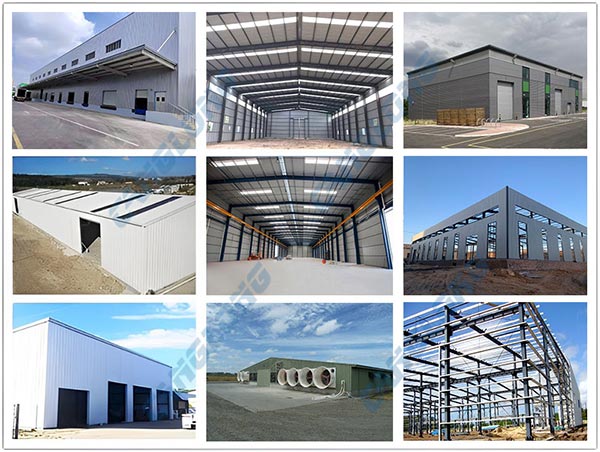
Ⅳ. Conclusion
From single slope to double slope, single span to double span, flat span to high and low span, the factory building structure The evolution of structural forms is essentially the product of the dialogue between human industrial needs and the natural environment. Arid areas prefer large spaces with single slopes and double spans, rainy areas rely on efficient drainage of double slopes and single spans, and mountainous areas give rise to three-dimensional utilization of high and low spans.
In the future, with the popularization of low-carbon technologies (recycled steel, photovoltaic integration) and digital tools (BIM, parametric design), factory structures will further break through traditional forms. For example, double-slope roofs may integrate flexible photovoltaic films (automatically adjust the angle with the slope), high and low spans may be dynamically layered through liftable floors, and single-span plants may be combined with cable-stayed structures to achieve larger spans (such as more than 50 meters). But what remains unchanged is that structural forms are always the best footnotes for function priority, environmental adaptation, and cost control, using the rationality of steel to support the diverse possibilities of global industry.
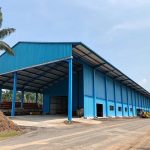
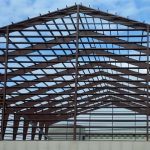
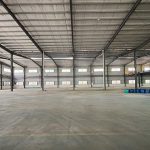
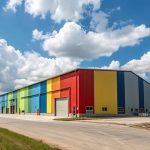
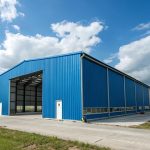
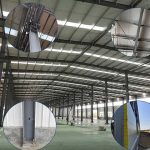
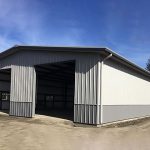
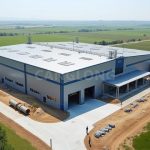
Send us the inquiry form